
New Year’s Resolutions for Dogs: 5 Good Habits to Start With Your Dog
Leap into 2023 like a Labrador launching into a lake by resolving to develop habits that will help your dog be healthier—and happier. And the good news is that while some “healthy” new year’s resolutions for people may seem as appealing as dog hair in your ice cream, these healthy resolutions to share with your pup are actually enjoyable—for both of you.
Plus, you’ll have a better chance of keeping them longer. One third of people who set New Year’s resolutions don’t make it past the end of January (others don’t make it past the cinnamon rolls at New Year’s brunch). But people who set goals with a friend have a greater chance for success. And what better buddy to resolve with than your furry family member?
Resolution #1: Go on More Walks
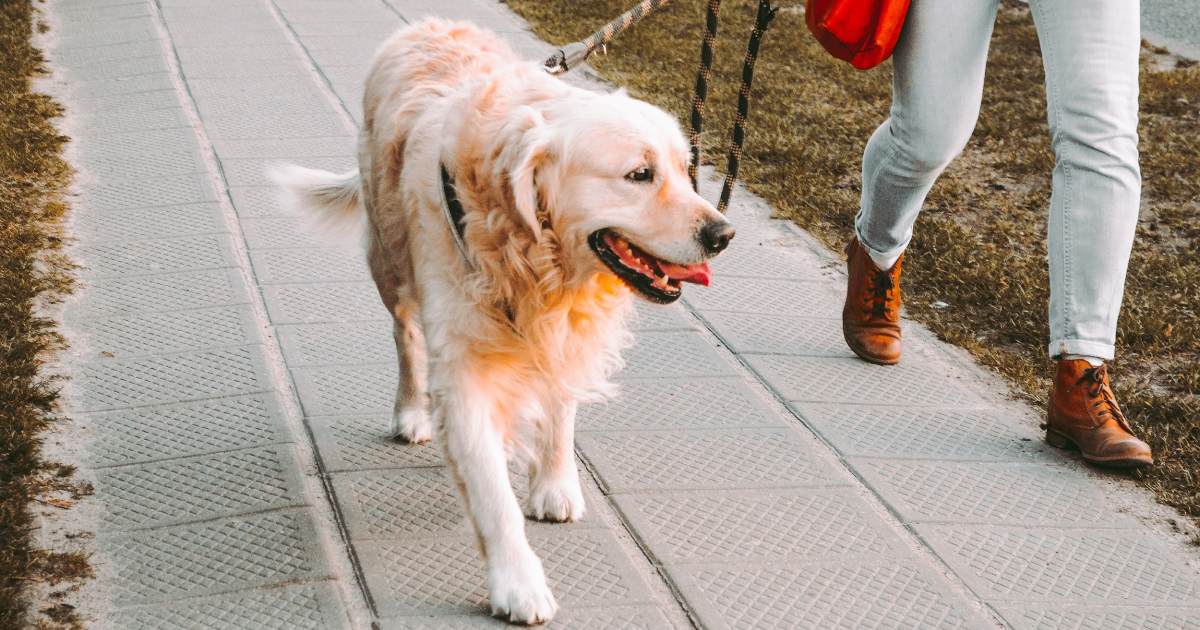
Walking your dog provides so much more than a chance for potty breaks. Strolling and sniffing exercises both the mind and the body. Every step gives a boost to their cardiovascular, immune, digestive and joint health. Walking burns calories and helps maintain a healthy weight—more than half of all dogs in the US overweight or obese, according to the American Animal Hospital Association. And, slim dogs live longer, healthier lives than chubby dogs.
Mentally, walks provide critical enrichment. Boredom-busting excursions give dogs the opportunity to catch up on the pee-mail along their usual route—or explore new sights and smells on new ones. Walking your dog also cultivates the bond between you and your favorite furball.
How long should you walk? That depends on the age, condition and breed of your dog. For example, a senior mutt may be happy to slowly peruse the neighborhood for 20 minutes while a 2-year-old Boxer mix can bounce around block after block for an hour. In general, if you’re just starting, aim for 15 minutes a couple times a day. Then, work up to 30 minutes. Pay attention to whether your dog begins to appear tired or sore and adjust accordingly. And don’t forget the poop bags!
Tips for Success
- Check in with your vet. Make sure your plans are appropriate for your dog’s age and fitness level before you begin. Your vet can also help you develop a strategy for safely increasing the length of walks as your dog (and you) get in shape and set some goals that may help keep you motivated.
- Make it routine. Build your daily walk(s) into your schedule. Not only will it help hold you accountable, but dogs love routine and consistency. It can help build confidence and even help reduce anxiety in some dogs.
- Track your walks. There are lots of phone apps and dog collar gadgets that can help you record time and distance. Gamifying your dog walks can make them even more fun—plus, you’ll feel good about the progress you track.
Resolution #2: Play More
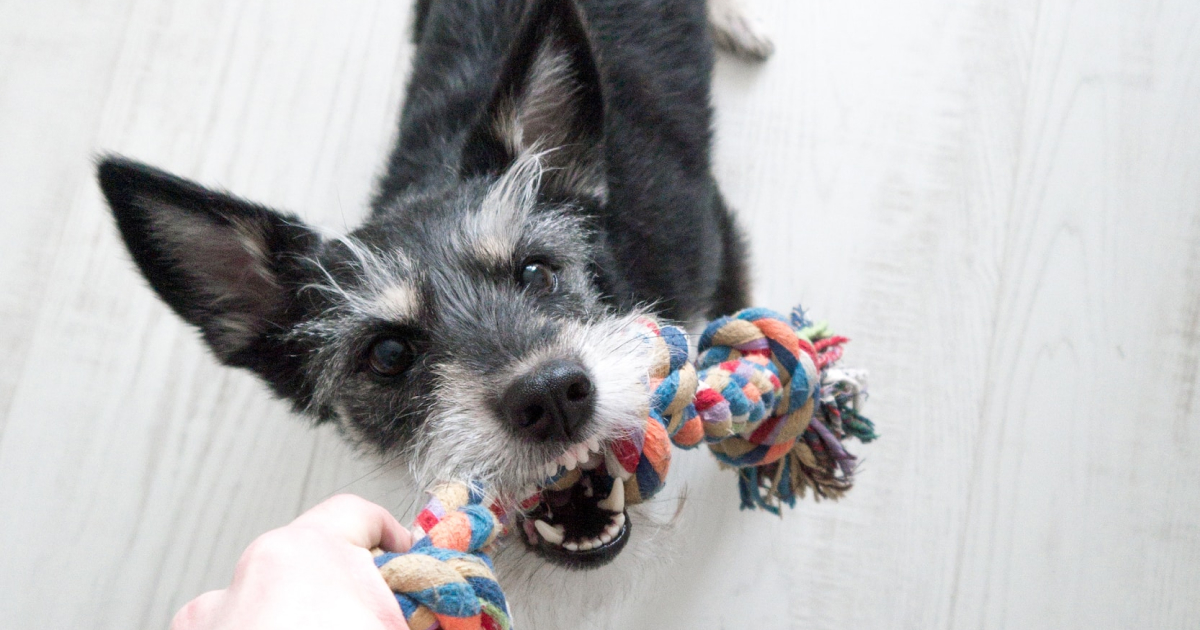
Whether it’s fetch, tag, or rounds of collective zoomies with the dog park pack, playing is seriously important for dogs’ mental and physical health. It provides exercise that helps bodies stay healthy. Movement helps keep all canine systems go, from snout to tail. Plus, playing provides mental enrichment that keeps brains healthy and dogs happy.
Playing helps satisfy dogs’ instinctive needs. Your pampered pup’s ancestors had to keep their foraging, chasing and wrestling skills sharp so they could survive. That’s part of the reason they played so often. Though today’s dogs may enjoy regular meals served in bowls with their names on them, those instincts still run strong. And if they don’t have outlets, it may result in unwanted behaviors like digging, chewing and barking. A playful romp with you or their doggy pals helps satisfy these natural instincts in a healthy way.
Even if they live with only you (and a herd of fluffy, squeaky toys), dogs are still pack animals. The social interaction they enjoy while playing with other dogs helps keep them happy and builds confidence. Playing cultivates the social bonds between your dog and other dogs and between your dog and you, bonds that are important for mental wellbeing.
Tips for Success
- Find a friend. Dogs have different play styles. Some are wrestlers. Others don’t like to be clobbered by other pups, but being chased by a howling pack makes their hearts sing. Finding a friend who loves to play the same way your dogs does will boost the fun factor and encourage them to play longer. Making plans with others also keeps you accountable and keep your healthy resolution on track.
- Mix it up. There are so many ways to play, there’s no need to do the same thing every day. Switching up your game can make things even more fun for your dog. You can always learn new ways to play by trying a class at your local shelter, like agility, nose work or flyball.
- Toys! The right toys can inspire play and keep pups playing longer. Food puzzles challenge dogs’ foraging and dexterity. Squeaky balls spark hunting instincts and keep dogs captivated. There are a zillion dog toys on the market. Be sure to choose toys that are safe from brands you trust.
Resolution #3: Learn New Tricks + Get More Treats
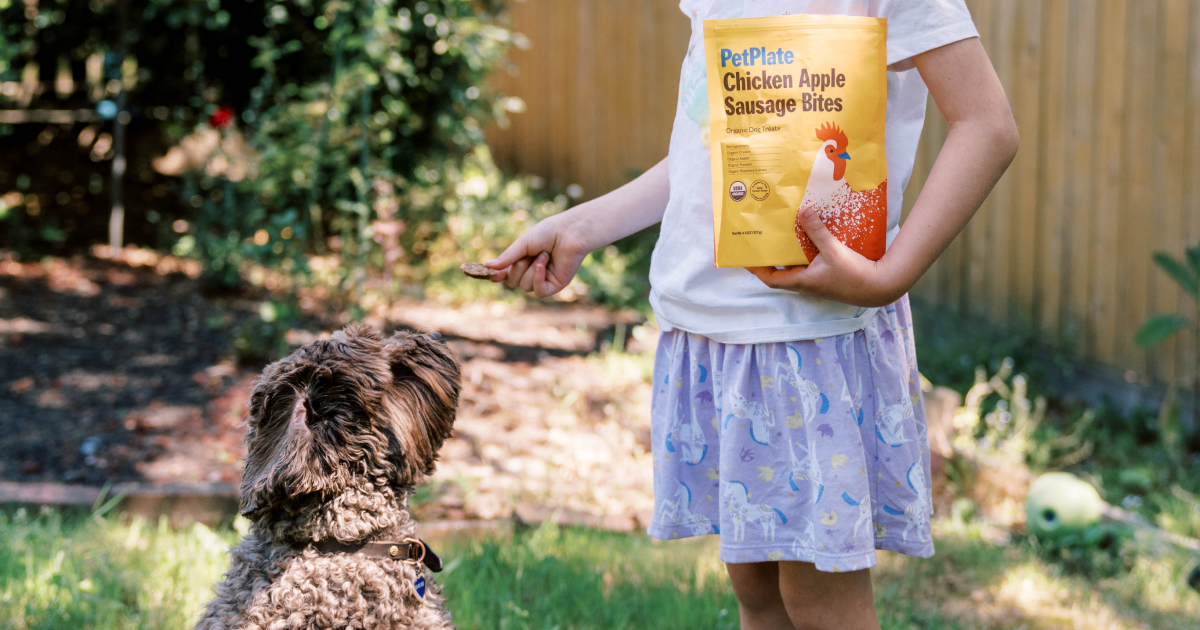
Teaching your dog to do tricks like bow, spin or catch treats helps keep them mentally sharp and physically active. It also strengthens the bond—and communication—between you and your dog.
While it may be tempting for a training session to turn into a feasting session, it does not have to. While they may want a giant cookie for rolling over on command, a training-size chunk is a fine reward for dogs. Use small treats, or treats that are easy to break apart, like PetPlate’s Chicken Apple Sausage Bites, for lots of positive reinforcement. For tips on training older dogs and puppies and for more about using positive reinforcement in training, check out these articles.
Whether you’re trying to teach your hound to skateboard or fetch you a drink from the fridge—or simply sit on command—learning tricks provides healthy mental stimulation and teaches dogs patience. The patience developed when learning to “sit pretty” especially comes in handy when you’re waiting to cross a busy street, or not knock over the neighbor’s biscuit-wielding toddler.
Tips for Success
- Start simple. Don’t begin with aims of teaching your dog to do the macarena. Avoid frustration (for you and your pupil) and start with easy, basic commands. For example, teaching a food-motivated dog to sit is easier than teaching other movements because it’s easy to encourage them to lift their snout up (and rump down) by holding out a treat and then moving it higher and higher until sit happens.
- Watch and learn. There are tons of helpful videos online that walk you and your pup through the steps of learning different tricks. Check out this one out from the AKC for learning five basic commands.
- Count cookies. Take into account how many treats you feed your dog while training and consider that when you feed them their regular meals. Otherwise, your pup’s belly may grow along with their trick repertoire.
Resolution #4: Get More Belly Rubs
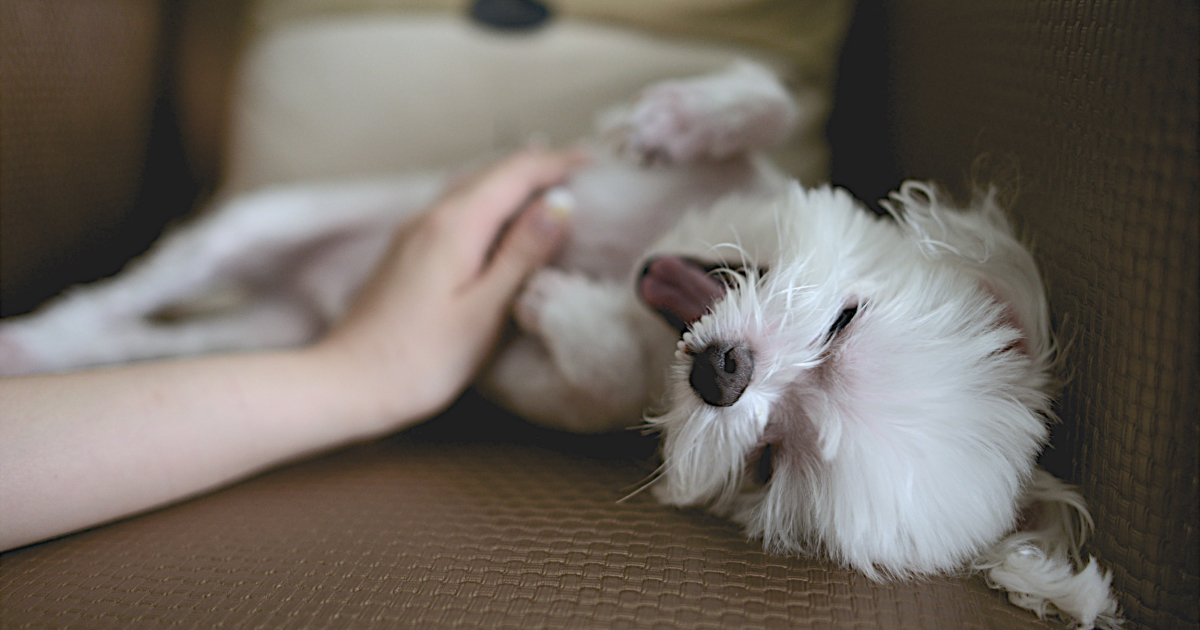
Belly rubs and calm pets and cuddles in general are soothing stress busters—for you and your dog. A good belly rubbing session releases oxytocin and endorphins, happy neurotransmitters. And, it lowers levels of cortisol, the stress hormone.
Even just sitting quietly with your pup and gazing into their eyes raises mood-boosting compounds in both species. Researchers have found that the mutual gaze between dogs and the people who care for them produces a very similar physiological profile to what’s observed between mothers and infants.
One study found that as a result of touch, a dog’s coronary artery blood flow increased to the same level as during intense exercise. In another study, whenever dogs were exposed to a stressful stimulus such as pain or fear, their heart rate and blood pressure decreased significantly if they were petted. Other studies suggest animals who are routinely touched are more resistant to stress. The animals in the study displayed less fear—and their learning capabilities were enhanced.
Belly rubs strengthen the bond between you and your dog. In the wild, canines in a pack groom one another. Rubbing, scratching and petting your pup provides similar social connection. In addition, giving your dog a daily once over with your hands lets you keep tabs on their health. You’ll notice bumps, ouchy areas or wounds that you might not have otherwise seen.
Tips for Success
- Find the spot! Most dogs have a favorite place to have rubbed. Behind the ears, rumps and bellies are a good bet. Remember, a dog’s ears are filled with nerve-endings. Rubbing them can trigger the release of happy hormones, but since they are so sensitive, dogs may be wary of you touching their ears.
- Pay attention. Keep an eye on your dog’s body language and cues to be sure they’re enjoying what you’re doing. Curled back lips and repeated yawning are signs your dog may not like what you’re doing. Remember, a wagging tail doesn’t necessarily mean a dog is happy. It can also be a symptom of nervousness.
- Mix in some grooming. Brushing feels good (to most dogs) and helps remove dead hair and skin and stimulates circulation and the production of healthy oils that keep coats healthy.
Resolution #5: Eat Better, Tastier Food
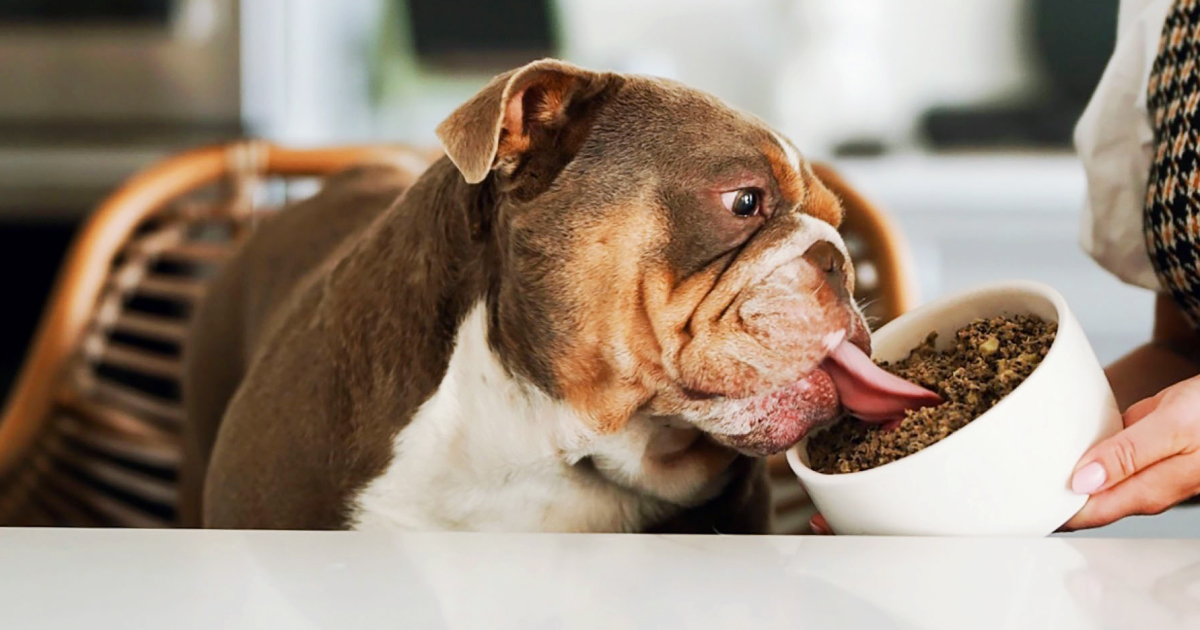
Delicious, nutritious food not only delights dogs at mealtime, it fuels healthier—and happier—lives. Tossing junk food and empty calories and replacing them with nutritious, tasty meals can transform body and mind—for both dogs and people. It’s just that it’s easier for dogs. After all, they (probably) can’t open the cabinet to get the Doritos. They eat what you give them (and maybe a few morsels snarfed up on a walk).
Artificial ingredients in commercial dog food, like preservatives, colors and flavors can upset digestion, cause inflammation and may even lead to disease. Eating too many filler ingredients can lead to obesity and high blood sugar.
When dogs eat better, they feel better. Tastebuds are tickled. Digestion is on track. And energy levels get a boost. Plus, good nutrition is the best preventative medicine. Dogs who eat healthier diets are simply healthier—and that means fewer visits to the vet.
Tips for Success
- Make it simple. Check out PetPlate! Skip shopping, measuring and worrying and have vet-formulated meals made with real ingredients in a human-grade kitchen delivered directly to your door.
- One size doesn’t fit all. Every dog has different nutrition needs based on things like age, weight and breed. PetPlate customizes each meal plan to ensure your pup gets a balanced, scrumptious meal optimized especially for them. Not every dog loves every flavor. And, mix things up. Life is too short to eat the same meal every day. Be sure to find food that your dog actually enjoys eating. Mealtime should be a party, not a trudge through kibbles.
- Cover your bases. Check to make sure your dog’s meals contain all the nutrients they need to thrive at their specific stage of life. PetPlate meals are designed by a veterinary nutritionist to provide the perfect balance of protein, complex carbs, fatty acids and the right mix of vitamins and minerals.
Keep Your Dog Healthy + Happy All Year Round

January is a great time to start making changes to enhance your dog’s health. But so is March. You can start building healthy habits any time. And, if you fall off the wagon, you have the most forgiving partner.